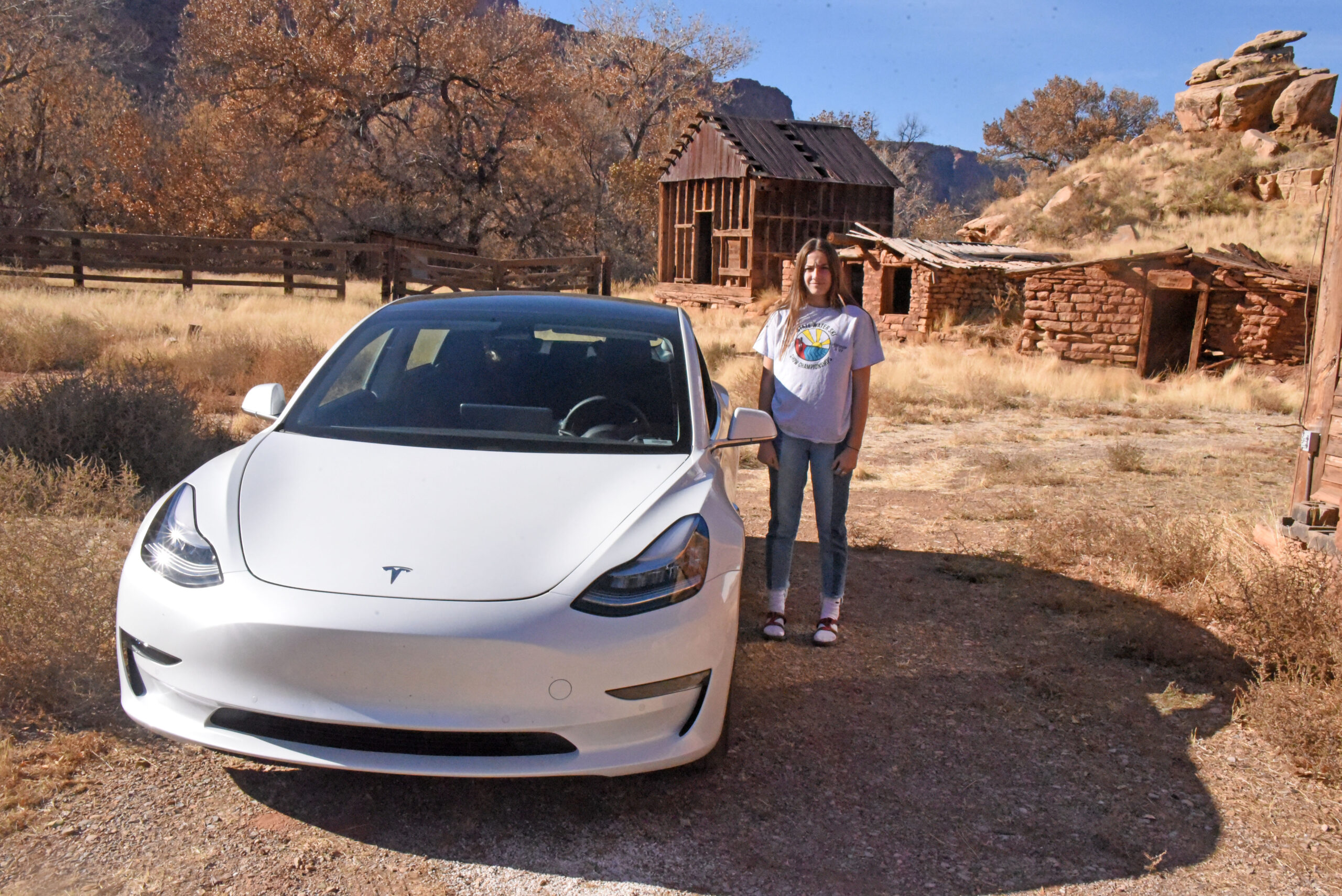Sign up for daily news updates from CleanTechnica on email. Or follow us on Google News!
How a Record-Setting Tidal Energy Project in New York City’s East River Is Helping Researchers Explore New, Recyclable Materials for Renewable Energy Tech
The blades are back, and they are getting chopped up, dunked, and stretched.
On a gray, foggy day in May 2021, a rust-kissed barge carried three shed-sized tidal turbines — each mounted on the points of a triangular steel frame — through New York City’s East River. Although the three turbines appeared to be identical, one was a doppelganger, built from an entirely new kind of resin that could help decarbonize even the most sustainable clean energy technologies, like tidal energy turbines.
“We’re decarbonizing the energy sector, but we also need to decarbonize the decarbonizing,” said Robynne Murray, a research engineer at the National Renewable Energy Laboratory (NREL).
Resins are like glue. They bind together fragments of other materials, like fiberglass, to build the tough composite materials used in many tidal and wind turbine blades. But some of these glues, like the popular epoxy, are one and done: Once they are heated to form solid, durable blades, they cannot be easily transformed and recycled.
But Murray and team designed a novel material, called a thermoplastic resin, that is not only easier to recycle, it is also better suited to survive the East River’s corrosive salt water — or any other promising tidal energy site. That means their new resin could be a win-win for decarbonization if the material can prove its potential out in the real world.
And it did.
For the six-month East River deployment in 2021, NREL partnered with tidal energy company Verdant Power through its Roosevelt Island Tidal Energy Project, which is funded by the U.S. Department of Energy’s Water Power Technologies Office. Verdant Power’s device, which held three turbines — two built from traditional epoxy and one from NREL’s thermoplastic resin — set a U.S. record for the industry, generating about 312 megawatt-hours of energy, the second highest amount produced by any marine energy project and enough to power roughly a thousand homes.
The pioneer thermoplastic composite blades not only survived their deployment, they did so swimmingly. The blades sustained no structural damage during their deployment, unlike their epoxy counterparts. And the material preserved all its pre-deployment strength, too. Although a software issue prevented the NREL team from saving some of the data collected by sensors on the turbine’s blades, all their data collection hardware—including those sensors and the device used to store the data—survived the harsh salt water.
“Any time you do something for the first time, you kind of expect that it’s not going to go perfectly, even if you do your best to address all the risks,” Murray said. But apart from a last-minute software issue and a pandemic that prevented NREL folks from traveling to New York City, the trial went better than expected. “It was definitely encouraging to see how well the hardware performed under water,” Murray said.
But the river was just the start.

Back in the lab, Paul Murdy, Robynne Murray, and team members perform tests to see if their recyclable thermoplastic resin could be a valuable material for tidal and wind turbine blades or other clean energy technologies. Photos by Joe DelNero (left) and Werner Slocum (right), both NREL
Now, back at the laboratory’s Colorado home, Murray and team have already cut their thermoplastic blades off the hub and sliced them into what they call coupons, which are rectangular bits as small as stamps or as big as magazines. Even if the blades survived the river, the team wants to find their breaking point — literally. For example, Murray and her crew plan to affix clamps to a coupon that will pull and pull and pull until the material snaps. Other coupons will soak in salt water to see how deep the water penetrates the material over time and whether that saturation impacts the material’s strength.
“We don’t really know how saturated they were when we pulled them out of the water,” Murray said. Normally, Murray explained, her team would have weighed the blades before and after the deployment to learn how much water they absorbed. But because the blades were already attached to the hefty hub, they could not get an accurate measurement of their weight.
“Which is too bad,” Murray said. “If there are things that we’re seeing in the test results, is it because they had water ingress or is it just a natural change that happens to the materials?”
That is what she and the team are trying to find out now. “We really need to fully understand how the material performs before we can decide if it’s worth trying to adopt as an industry,” Murray said.
And she is not tackling that big, industry-altering question alone.
“Now we get to do the investigative work,” said Paul Murdy, a mechanical engineer at NREL and Murray’s partner in chopping, snapping, and soaking novel marine energy materials, including the thermoplastic blades. The thermoplastic performed well thus far, Murdy said. Now, with their material manipulations, they can parse out exactly how the material differs from traditional go-tos, like epoxy composites.
Although Murray does see thermoplastics as a potential way to build more sustainable, recyclable composite materials for wind and tidal turbine blades, she also acknowledges that these materials might not be the best choice for all energy applications. The materials tend to creep, meaning they could slowly deform over time. And, even if humans have put a whole lot of stuff under water, there is still much to learn about how newer materials, like thermoplastic composites, handle what can be a strenuous, salty environment.
These post-deployment tests can help Murray and team, as well as marine energy companies, better understand how thermoplastics hold up. And that information could help determine whether they are well suited for wind and tidal turbines or even other renewable energy technologies.
“It is a move in the right direction, toward better materials for the energy industry,” Murray said. “And I do think there’s going to be a place for thermoplastics. It’s just a matter of what structures it’ll be in.”
She and other materials experts at NREL are exploring other options, too, like a recyclable epoxy that can be plant-based and could rival petroleum-based products.
“Today’s materials are up to the challenge in terms of structural performance,” Murray said. “But they are typically fossil-fuel-derived and not recyclable. So, whether it’s thermoplastics or another recyclable material that takes off in the future, it matters where our materials are coming from.”
Learn more about NREL’s novel materials and their role in decarbonizing decarbonization. And check out NREL’s Composites Manufacturing Education and Technology Facility where many of these materials are made.
By Caitlin McDermott-Murphy, article from NREL
Have a tip for CleanTechnica? Want to advertise? Want to suggest a guest for our CleanTech Talk podcast? Contact us here.
EV Obsession Daily!
I don’t like paywalls. You don’t like paywalls. Who likes paywalls? Here at CleanTechnica, we implemented a limited paywall for a while, but it always felt wrong — and it was always tough to decide what we should put behind there. In theory, your most exclusive and best content goes behind a paywall. But then fewer people read it!! So, we’ve decided to completely nix paywalls here at CleanTechnica. But…
Thank you!
Tesla Sales in 2023, 2024, and 2030
CleanTechnica uses affiliate links. See our policy here.




